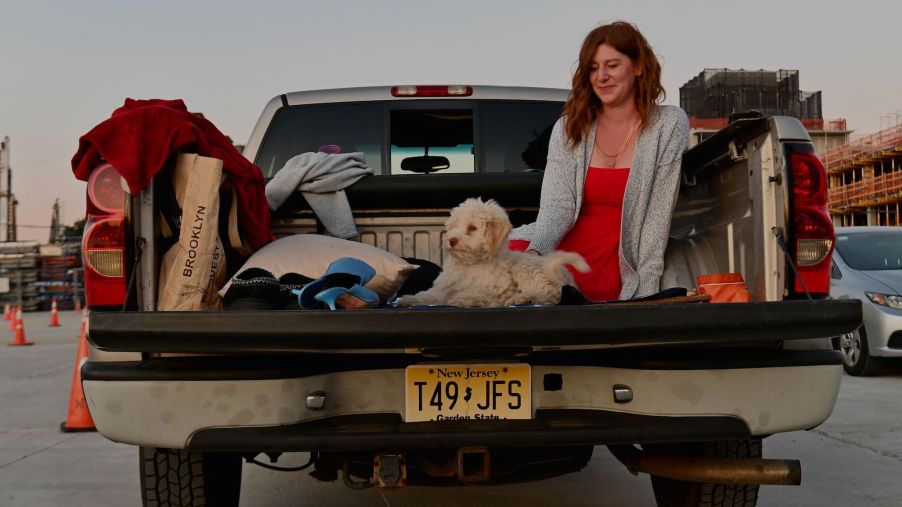
Is It Legal to Ride in the Bed of a Pickup Truck?
At the pace with which Americans are getting vaccinated and businesses are opening, people are itching to enjoy summer 2021. However, we shouldn’t overlook important things like car safety as we hit the road in record numbers. Because pickup trucks tend to have less interior space than SUVs, drivers may be tempted to allow passengers to sit in the bed. But before you do, it’s a good idea to know the laws concerning passengers — particularly children — riding in the bed of a pickup truck.
Seat belts, age restrictions, and riding in the back of a pickup truck
Some of us are barely old enough to recall a time when wearing a seatbelt was merely a recommendation. Today, “all states and the District of Columbia require adult front-seat occupants to use seat belts. Adult rear-seat passengers also are covered by the Laws in 31 states and the District of Columbia,” the Insurance Institute for Highway Safety reports. The only wildcard exception is New Hampshire, with no seat belt laws. When it comes to children ranging in age, the IIHS says separate rules cover them, and the rules differ significantly from state to state.
Regulations for pickups can be trickier. According to drivesafeonline.org, “19 states don’t have any rules about riding in the bed of a truck.” Other states limit circumstances when riding in a pickup bed is allowed. Wisconsin limits sitting in the bed to working on a farm, hunting, and parades.
The AAA shows how far and wide the pendulum swings concerning age restrictions. They can start as young as 6 years to 19. Texas limits the age of nonrelated passengers to above 16. But if related, the Lone Star State leaves you to your own devices. States like Oregon, Connecticut, and Rhode Island require some form of a seat with a restraint belt.
California, Indiana, and New York must have figured it doesn’t make much sense to force seatbelts for safety while allowing people to ride in the back of pickups. All three states don’t allow it under any circumstances.
States usually adhere to the NHTSA’s Occupant Crash Protection standard
Typically, state laws stipulate that such seatbelt requirements apply to only vehicles covered in the NHTSA‘s Standard No. 208, Occupant Crash Protection (49 CFR ‘571.208). For example, Arkansas Code § 27-34-104 states, “A driver who transports a child younger than 6 years old and less than 60 pounds in a passenger automobile, van, or pickup truck (other than one operated for hire) shall secure such child in a child passenger restraint system that complies with Federal standards.”
In California, the statute dictates, “No person driving a pickup truck or flatbed motortruck shall transport a person in or on the back thereof unless the passenger is restrained by a federally approved restraint system. Cal. Vehicle Code §23116(a),(c).” It adds, “No person shall ride in or on the back of a pickup truck or flatbed motortruck on a highway unless they are restrained by a federally approved restraint system. Cal.Vehicle Code §23116(a),(b),(c).”
Legal or not, riding in the bed of a pickup truck isn’t always a good idea
A lot of what we do in life boils down to personal discretion. Drag racing on a track can be deadly, but it’s legal and much safer for the public than street racing. At the end of the day, it’s up to your discretion whether you want to risk severe bodily injury or death while drag racing at a track. The same notion applies when allowing passengers to ride in the beds of pickup trucks, assuming it follows state laws.
The personal injury law firm Heintz Law points out that the 19 states with no laws governing riding in the back of pickups lead the nation in deaths and injuries. Furthermore, even if it’s legal where you live, you can be held liable for injuries or death resulting in a vehicle crash. Primary reasons why riding in the bed of a pickup is dangerous are a side-impact collision causing the pickup to roll; a rear-end collision can launch a passenger forward and out of the bed; and the slick surface of the bed can cause passengers to slide and tumble about, possibly leading to minor injuries.
Also, the Utah Humane Society reported in 2020 that accidents kill over 100,000 dogs yearly while riding unrestrained in the backs of pickup trucks. So it’s not merely about us but also our animal best friends.


